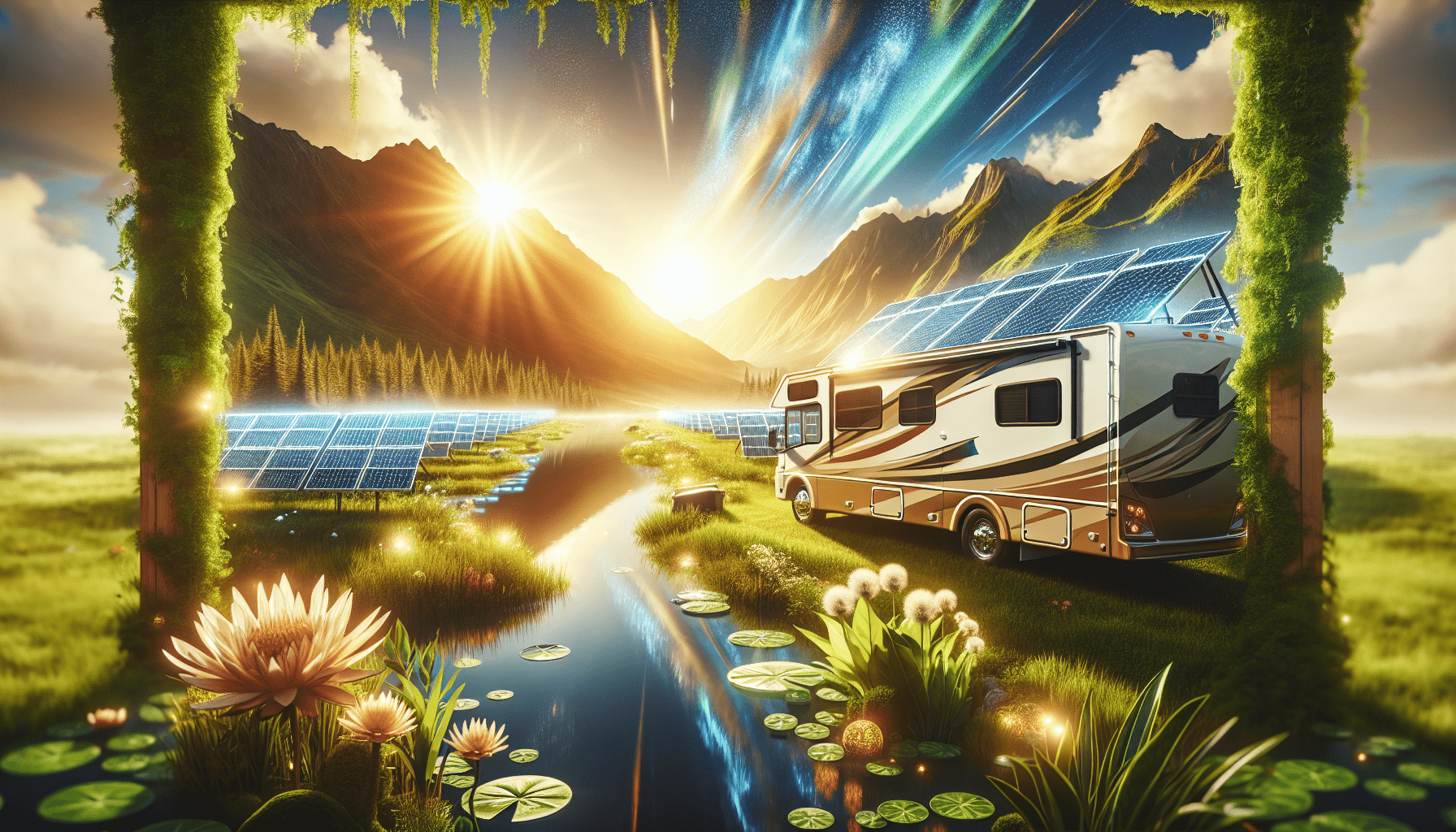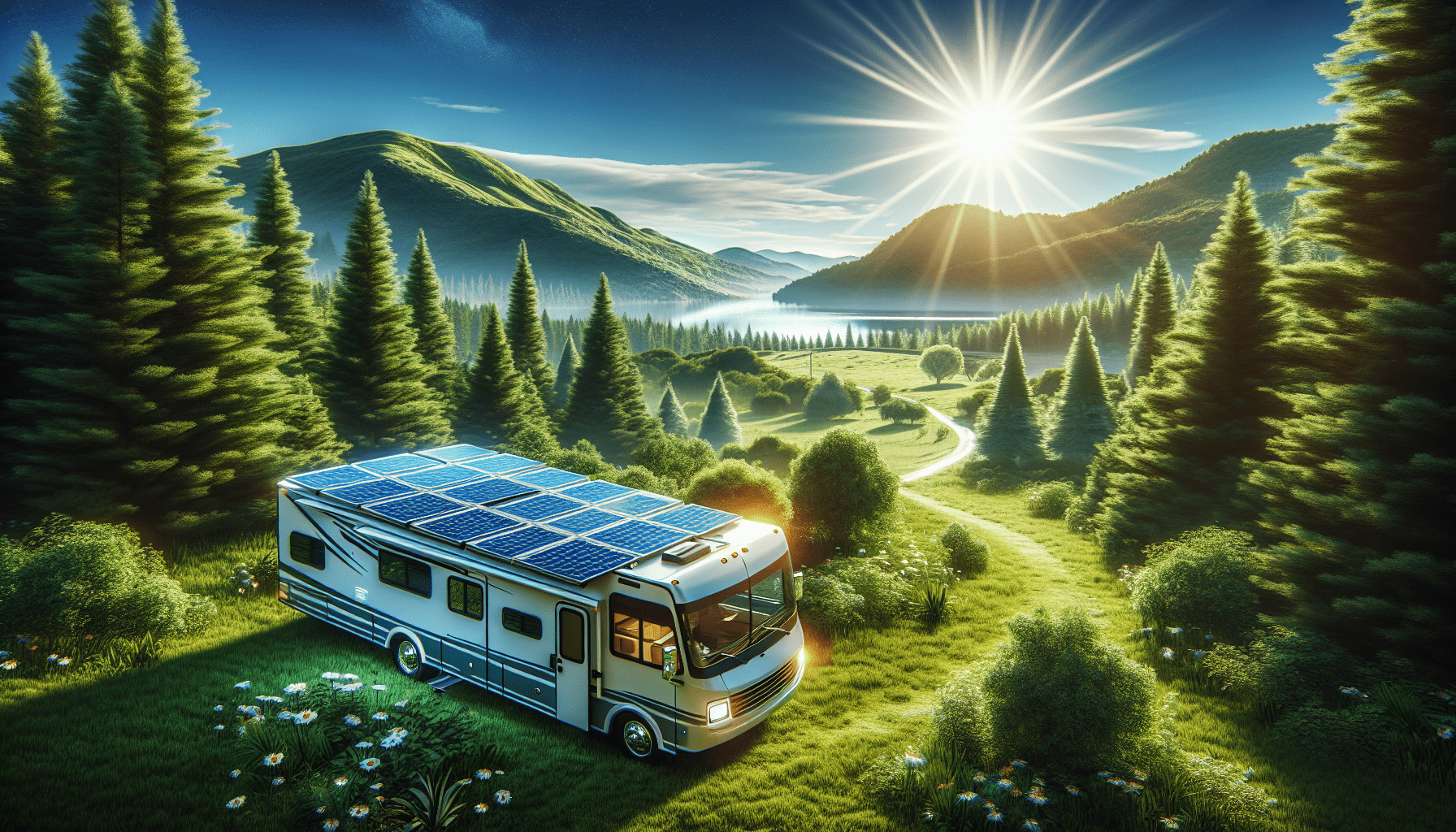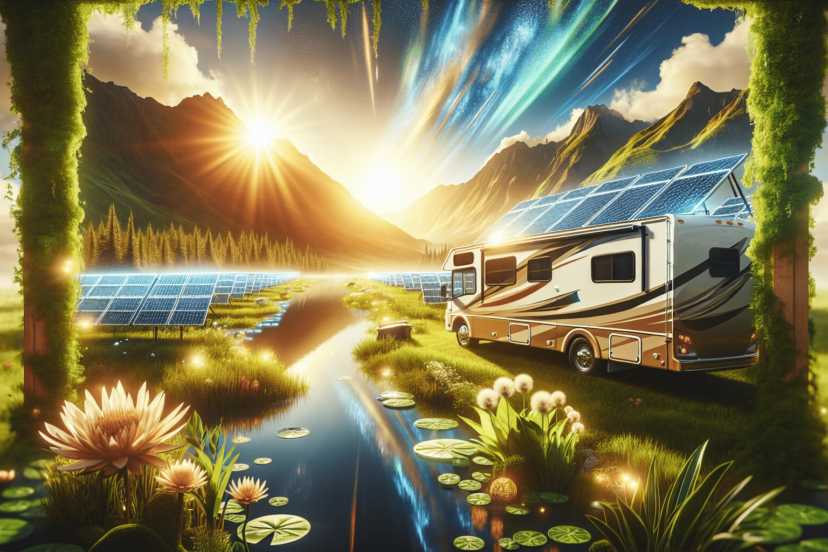Harnessing Sustainable Energy with an RV Solar Power Kit
As an Amazon Associate, I earn from qualifying purchases, at no additional cost to you. Disclaimer
Have you ever wondered about the thrill of exploring the great outdoors while ensuring you remain environmentally conscious and energy efficient? As an avid traveler with a passion for sustainability, I frequently ponder this synergy between adventure and responsibility. Recently, I found a rather ingenious way to have my cake and eat it too: harnessing sustainable energy through an RV solar power kit.
Click Here to Go Solar and Save
Introduction to RV Solar Power Kits
There’s something profoundly liberating about hitting the open road with your home on wheels. Whether it’s a weekend getaway or a months-long sojourn, RV life offers unparalleled freedom. But with that freedom comes a unique set of challenges—most notably, finding a reliable, sustainable source of power to fuel your journey. This is where RV solar power kits come in, providing a green, efficient, and cost-effective alternative to traditional power sources.
What Is an RV Solar Power Kit?
An RV solar power kit is a comprehensive package designed to convert sunlight into usable electricity for your recreational vehicle (RV). These kits typically include solar panels, a charge controller, wiring, and mounting hardware. They can also come with additional components such as batteries and inverters, depending on your specific energy needs.
Benefits of Using Solar Power in an RV
The allure of solar power for RVs isn’t just about going green—it extends to practicality and cost-effectiveness. For one, solar energy allows you to camp off-grid without the need for hookups, giving you the flexibility to explore more remote and scenic locations. Additionally, while the upfront expense of a solar kit might seem steep, it can lead to significant savings over time by reducing reliance on fuel-powered generators and campground electricity fees.
Components of a Solar Power Kit
Understanding the individual components of a solar power kit can empower you to make informed decisions tailored to your RV lifestyle.
Solar Panels
The solar panels are the most visible component of the kit, capturing sunlight and converting it into electricity. Panels come in three main types: monocrystalline, polycrystalline, and thin-film. Each has its pros and cons in terms of efficiency, cost, and space requirements, with monocrystalline panels typically being the most efficient and compact.
Charge Controller
The charge controller sits between the solar panels and your battery bank. Its job is to regulate the voltage coming from the panels, ensuring that your batteries are charged safely and efficiently. This component is crucial to prolonging battery life and maintaining optimal performance.
Battery and Battery Bank
If you’re planning to store solar energy for use when the sun isn’t shining, you’ll need a good set of batteries. Common choices include lead-acid batteries and lithium-ion batteries. While lithium-ion tends to be more expensive, they offer better performance and longevity, which can justify the additional cost in the long run.
Inverter
When your gadgets and appliances require AC power, an inverter is necessary to convert the DC power stored in your batteries into AC power. Inverters come in modified sine wave and pure sine wave types, with pure sine wave inverters being preferred for more sensitive electronics.
Wiring and Mounting
Wiring and mounting hardware are often overlooked, but they are vital for safe and efficient installation. The quality and gauge of wiring can affect overall system performance, and proper mounting ensures your panels are securely attached to the roof of your RV.

Click Here to Power Your Home with Solar
Steps to Installing a RV Solar Power Kit
To make the most of your solar power, a proper installation is crucial. Here’s a step-by-step guide:
Step 1: Assess Your Energy Needs
Before buying a solar kit, assess your energy consumption. Calculate the total wattage required by the devices you’ll be using and match it with the solar kit’s output capacity.
Step 2: Choose the Right Kit
Based on your energy assessment, select a kit that meets your needs. Consider factors like panel efficiency, battery capacity, and system expandability.
Step 3: Install the Solar Panels
Mount the solar panels on the RV roof using brackets or a tilt mounting system. Ensure they’re positioned to receive maximum sunlight exposure.
Step 4: Connect the Charge Controller
With your panels installed, route the wiring to the charge controller, then connect it to your battery bank. The charge controller will manage the energy flow, so it’s important to follow manufacturer instructions closely.
Step 5: Connect the Inverter
Link the inverter to your battery bank, ensuring that it’s suitable for your system’s power output. Double-check connections to avoid potential issues when using AC appliances.
Step 6: Test the System
Once everything is connected, test your system to ensure it operates efficiently and safely, checking each component for proper function. Troubleshoot any issues with reference to the manual or professional help if necessary.
Maintenance and Troubleshooting
Keeping your solar power system in peak condition is key to long-term efficiency.
Regular Maintenance
Routine maintenance for your solar power kit includes checking connections, cleaning solar panels to remove dirt and debris, and inspecting the charge controller and inverter for any wear and tear.
Troubleshooting Common Issues
Common issues, such as reduced power output, might arise from dirty panels or faulty wiring. If you face persistent problems, refer to your manual or consult a professional to avoid exacerbating the issue.

Click Here to Discover Solar-Powered Solutions
Cost Considerations
While the initial investment for solar may be significant, the potential savings on electricity and fuel, coupled with the environmental benefits, often justify the expenses.
Comparing Costs
Here’s a simple comparison:
| Energy Source | Upfront Cost | Long-term Cost | Environmental Impact |
|---|---|---|---|
| RV Solar Power Kit | High | Low | Low |
| Traditional Generators | Moderate | High | High |
Choosing a solar power kit involves weighing your initial budget against potential savings and eco-friendliness.
Environmental Impact
Harnessing solar energy drastically reduces your carbon footprint compared to traditional generator use, aligning with an eco-friendly lifestyle and responsible travel.
The Big Picture
By relying on solar power, you contribute to reducing greenhouse gas emissions, thus aiding global efforts to combat climate change. It’s a significant step toward more sustainable, responsible RV travel.
Conclusion: Embrace the Freedom
To travel mindfully—embracing both freedom and responsibility—is at the heart of the RV solar power kit journey. As you harness the sun’s energy, you’ll not only revel in the independence it offers but also be part of a larger movement towards sustainable living. Isn’t it time you hit the road with a solar-powered RV, merging adventure with ecological stewardship?

